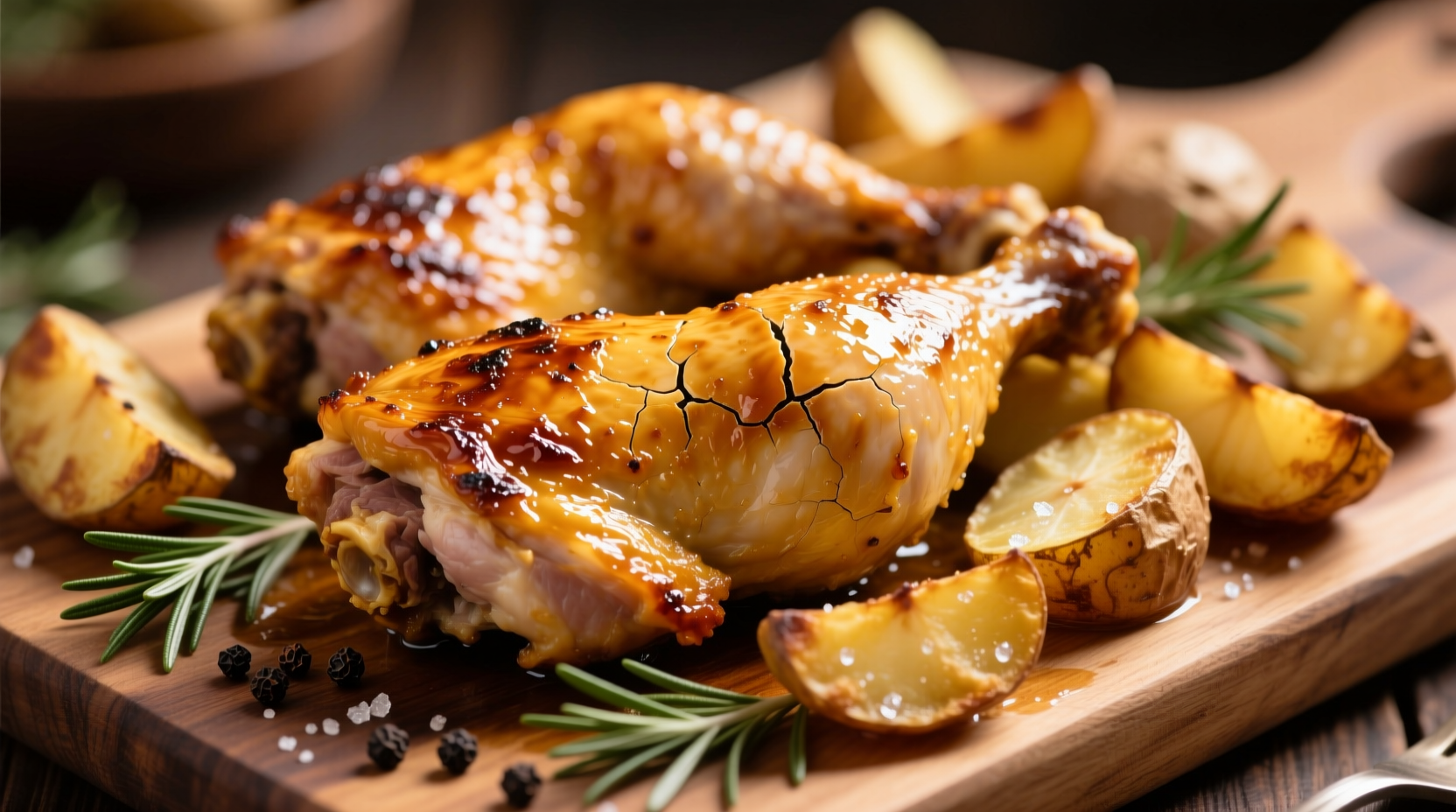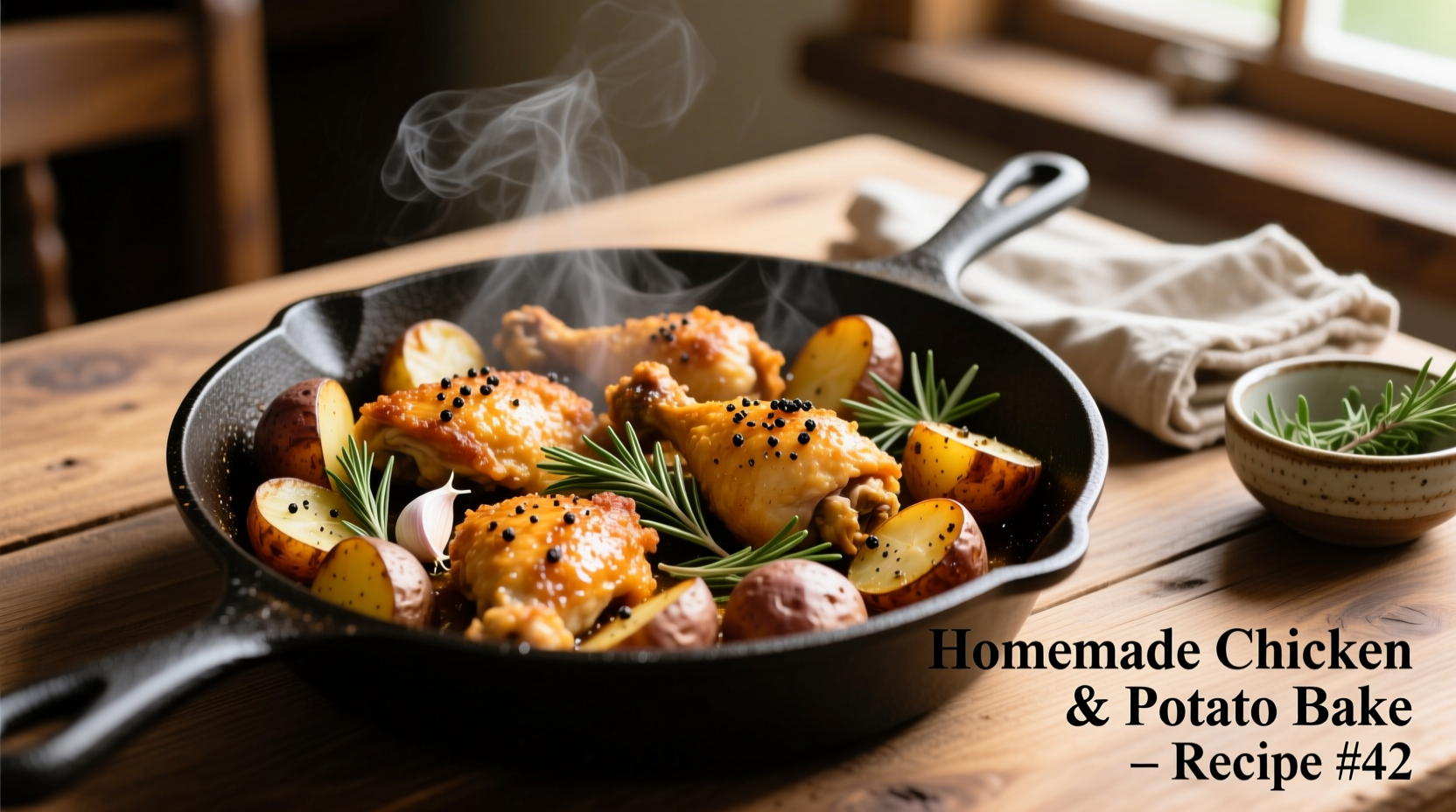Chicken and potatoes create the perfect meal pairing because they complement each other's flavors, require similar cooking temperatures (375-425°F), and can be prepared together in one pan for minimal cleanup. These versatile ingredients form the foundation of dozens of global comfort food classics from roasted herb chicken with crispy potatoes to hearty stews.
Your Complete Guide to Perfect Chicken and Potato Meals
When you're searching for satisfying weeknight dinners that please everyone, chicken and potato recipes deliver reliable comfort with impressive versatility. Whether you're a beginner cook or a seasoned home chef, these protein-and-carb powerhouses offer endless possibilities for creating balanced, flavorful meals that come together in 30-60 minutes with minimal equipment.
Why Chicken and Potatoes Work Perfectly Together
The magic of chicken and potatoes lies in their complementary cooking properties. According to USDA Food Safety guidelines, both ingredients reach safe internal temperatures (165°F for chicken, 205-212°F for fully cooked potatoes) within similar timeframes when roasted at 400°F. This synchronization prevents undercooked chicken or mushy potatoes—a common frustration for home cooks.
| Cooking Method | Chicken Temp | Potato Temp | Perfect Timing |
|---|---|---|---|
| Roasting | 400°F | 400°F | 35-45 minutes |
| Sheet Pan | 425°F | 425°F | 25-35 minutes |
| Slow Cooker | Low: 200°F | Low: 200°F | 4-6 hours |
Top 3 Foolproof Cooking Methods
1. The One-Pan Roast (Beginner Friendly)
This method delivers crispy-skinned chicken and golden potatoes with minimal effort. Cut chicken thighs into uniform pieces and parboil potatoes for 5 minutes before roasting. The parboiling step, recommended by culinary science experts at America's Test Kitchen, creates a starchy surface that transforms into perfect crispiness during roasting.
2. Sheet Pan Suppers (30-Minute Meals)
For busy weeknights, sheet pan meals eliminate multiple dishes. Place chicken breasts on one side of the pan and cubed potatoes on the other. Toss potatoes with 1 tablespoon olive oil per pound to ensure even browning. As noted in The Food Lab by J. Kenji López-Alt, this oil-to-potato ratio creates optimal crispiness without greasiness.

3. Dutch Oven Stews (Meal Prep Friendly)
Dutch ovens create restaurant-quality results through even heat distribution. For classic coq au vin or chicken paprikash, brown chicken first, then sauté potatoes in the same pot to absorb flavor. The USDA recommends maintaining liquid temperatures above 140°F during slow cooking to prevent bacterial growth.
Nutritional Benefits You'll Appreciate
Chicken and potatoes form a nutritionally balanced meal when prepared properly. A 6-ounce serving of roasted chicken breast with 1 cup of roasted potatoes provides approximately 450 calories, 45g protein, and essential nutrients including:
- Vitamin B6 (50% of daily value) for metabolism
- Potassium (25% DV) for heart health
- Selenium (70% DV) for immune function
- Vitamin C (30% DV) from potatoes with skin
Registered dietitians at the Academy of Nutrition and Dietetics confirm that keeping potato skins intact preserves up to 50% more fiber and nutrients compared to peeled potatoes.
5 Flavor Boosters Professional Chefs Use
- Lemon-herb infusion: Add lemon slices and fresh rosemary under chicken skin before roasting
- Vinegar finish: Drizzle with apple cider vinegar after cooking to brighten flavors
- Mustard crust: Coat chicken with Dijon before adding to potatoes
- Garlic confit: Roast whole garlic cloves with potatoes for sweet, mellow flavor
- Smoked paprika: Toss potatoes with 1 tsp smoked paprika for depth
Common Mistakes to Avoid
Even experienced cooks make these errors that compromise results:
- Overcrowding the pan: Creates steam instead of crispiness (leave 1 inch between pieces)
- Not patting chicken dry: Prevents proper browning (pat with paper towels before seasoning)
- Adding potatoes too early: Leads to mushy texture (add parboiled potatoes after chicken has seared)
- Skipping resting time: Causes juices to escape (rest chicken 5-10 minutes before serving)
Dietary Adaptations That Actually Work
These tested modifications maintain flavor while accommodating dietary needs:
- Lower-carb option: Replace half the potatoes with radishes (they mimic potato texture when roasted)
- Dairy-free version: Use olive oil instead of butter for roasting
- Higher-protein twist: Add white beans during the last 15 minutes of cooking
- Gluten-free assurance: Use cornstarch instead of flour for thickening stews
Storage and Reheating Best Practices
Proper storage maintains quality for leftovers. The National Center for Home Food Preservation recommends:
- Cool completely within 2 hours of cooking
- Store in airtight containers for up to 4 days
- Reheat in oven at 350°F (not microwave) to maintain texture
- Freeze portions for up to 3 months
When reheating, add 1-2 tablespoons of broth or water to prevent drying. For frozen meals, thaw overnight in refrigerator before reheating.
Perfect Pairings for Complete Meals
Elevate your chicken and potato dishes with these complementary sides:
- Green beans with lemon zest
- Simple arugula salad with balsamic
- Roasted carrots with thyme
- Crusty whole-grain bread
For wine pairings, sommeliers recommend medium-bodied whites like Chardonnay or light reds like Pinot Noir that complement without overwhelming the dish.











 浙公网安备
33010002000092号
浙公网安备
33010002000092号 浙B2-20120091-4
浙B2-20120091-4